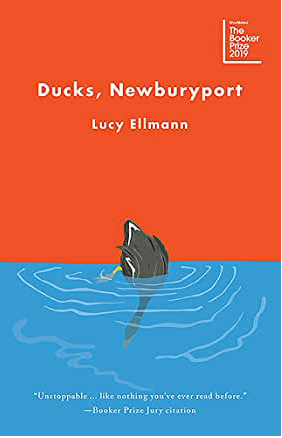Seven Novels that Wildly Defy the Three-Act Structure
- Editors

- Apr 7, 2021
- 4 min read
If you've picked up a book, chances are you're familiar with the three-act structure. It's a classic in narrative fiction, and drives a story in the following way: act I begins with the setup, where an inciting incident occurs to hook the reader. Act II, or the confrontation, involves the rising action and the story's midpoint. In the denouement, or third act, we've experienced the story's climax and entered the resolution.
But enough about normal: we're suckers for the subversive.
So here it is - our short list of books that defy the three-act structure. We know there are many greats out there, but here are a few that we hold in high regard for what they do: challenge the typical when it comes to bookish standards. Read on for the what and why of books whose structures break our brains in the best possible way.
1. B.S. Johnson's The Unfortunates

Johnson's 1969 experimental work is well-known for being published as a "book in a box." Within the box, the book contains 27 sections. The first and last chapter are designated as such, but the remaining 25 chapters are meant to be read in any order. Chapters range from a single paragraph to 12 pages, leaving countless narrative options for a reader. The book's themes are described as death and friendship, as recounted through memories.
2. David Mitchell's Cloud Atlas
Mitchell's work reads like a triangle, where the timeline starts in the bottom left, climaxes at the pointed top and reverts to the bottom right. But, the intriguing portion of this structure is in the book's fold as the midpoint. Picture the triangle: at any point in the story, the reader can draw a line from the left to right side of the triangle and find a parallel in the story. Alternately, these are nested stories, told in chronological order, oldest to newest, interrupted at a midpoint and then resolved in reverse chronological order. Perhaps more intriguing than Mitchell's structure is his ability to alter voice throughout the six stories and travel the reader through six entirely different, yet uniquely conjoined scenarios.

3. Mark Z. Danielewski's House of Leaves
Danielewski's epic (fictional?) documentary describes a house that is larger on the inside than it is on the outside. The style of this narrative can only be experienced by physically picking up this book and flipping through the pages. It's written in various typesets, fonts, and colors. It's footnoted, and the footnotes have footnotes. There are passages that are meant to be held to a mirror and read. Passages that require the reader to turn the book around and around the read the words that circle the outer edges of the pages. As the characters delve into the depths of their sanity, the book brings the reader on a similar - scary - journey.
4. Italo Calvino's If On a Winter's Night a Traveler
The first chapter begins on art and reading, but overall, the book consists of alternating chapters in which half are written in second-person point of view, while the other half are written in short stories; these may be considered as novel fragments, or the first chapter of 10 separate novels. In that sense, it's been said that it makes no matter the order in which the book is read. However, purists are likely to argue that themes present in the first chapters appear in later chapters, thus serving an overall narrative.
5. Lucy Ellmann's Ducks, Newburyport

Ellmann's 1,000-page single-sentence novel was short-listed for the 2019 Booker Prize. The main character is an unnamed middle-aged Ohio woman, and the novel is written as one long sentence, separated by commas and semi-colons. It's a series of clauses reflecting the narrator's inner monologue. There are no paragraph breaks. "Don't let it stop you," the book reviews read. It might offer a new perspective on some things - like how there might be too many facts in the world.
6. Julio Cortazar's Hopscotch
This 1963 novel by Argentinian author Cortazar is a "stream-of-conscious" story that can be read two different ways. The author meant it as an exploration with multiple possible endings, as an ongoing search for questions that have no answers. Hopscotch has 155 chapters, with the last 99 designated as "expendable." Upon further read, it's discovered that the chapters aren't necessarily expendable, as they are chapters that fill in answers to questions that come up in earlier segments. Cortazar recommends either "hopscotching" throughout all 155 chapters according to a table of instructions that he created, or choosing a unique path throughout the narrative.

7. James Joyce's Finnegans Wake
The classic known as"the novel the internet was made for," begins with language so unnerving to a newcomer, it only requires a page before even the heartiest are likely to walk away. Yet, listening to the book read by an experienced Joycean provides the correct lilt and rhythm to reveal the nuanced and fascinating use of language employed in its pages. Joyce himself says, "In writing of the night, I really could not... use words in their ordinary connections. Used that way, they do not express how things are in the night, in the different stages - the conscious, then semi-conscious, then unconscious. I found that it could not be done with words in their ordinary relations and connections. When morning comes again of course everything will be clear again... I'll give them back their English language. I'm not destroying it for good." Plus, we are enamored by the fact that the opening line of the book continues from the closing line, creating an infinite loop of story... like a dream, of which Finnegan's Wake is night to Ulysses' day.
Which structure-defying narratives land on your list? Let us know in the comments below!
Love what we do? Tap the heart button! Extra love it?....Buy us a coffee!








Comments